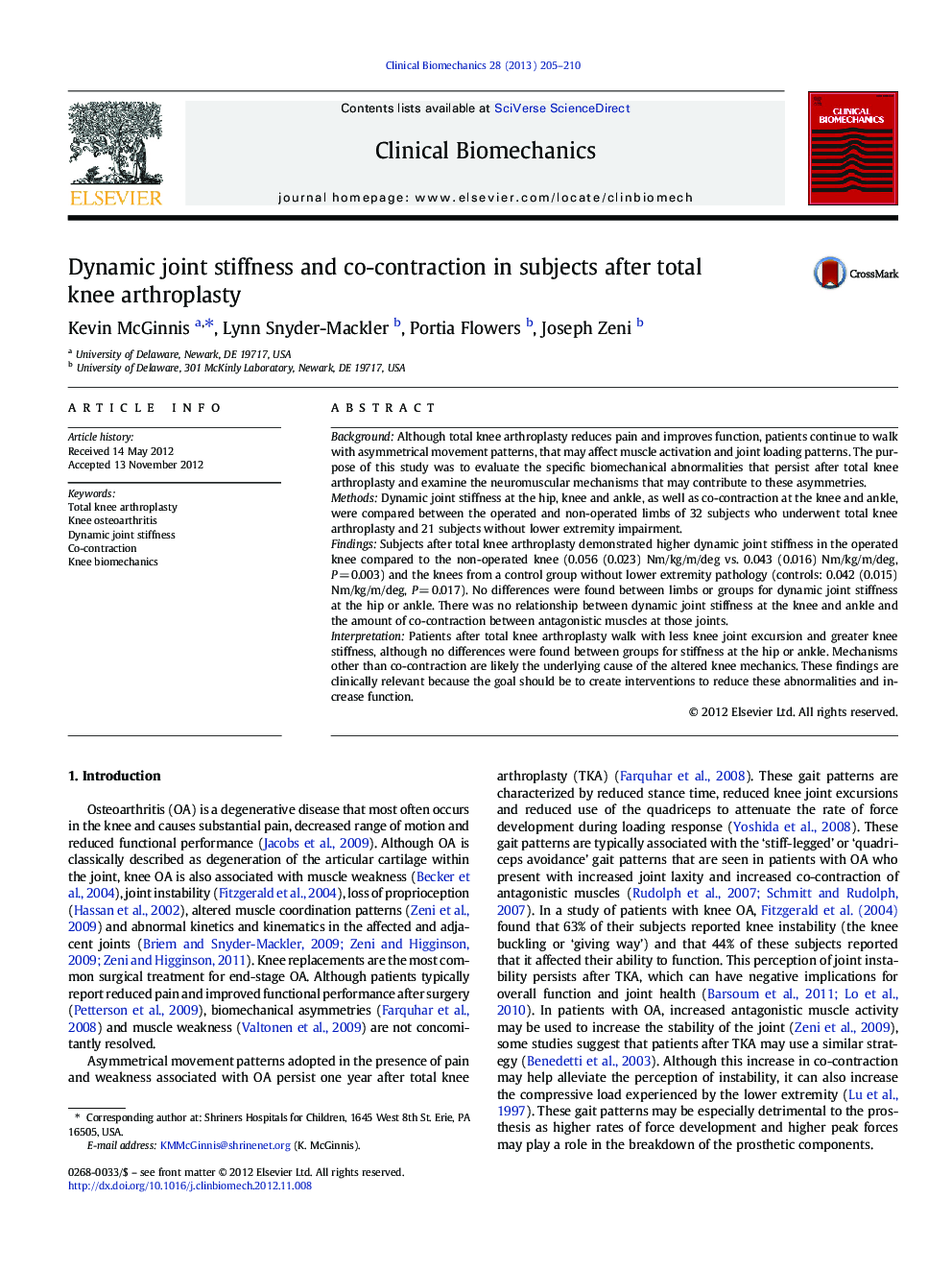| کد مقاله | کد نشریه | سال انتشار | مقاله انگلیسی | نسخه تمام متن |
|---|---|---|---|---|
| 6205063 | 1264940 | 2013 | 6 صفحه PDF | دانلود رایگان |
BackgroundAlthough total knee arthroplasty reduces pain and improves function, patients continue to walk with asymmetrical movement patterns, that may affect muscle activation and joint loading patterns. The purpose of this study was to evaluate the specific biomechanical abnormalities that persist after total knee arthroplasty and examine the neuromuscular mechanisms that may contribute to these asymmetries.MethodsDynamic joint stiffness at the hip, knee and ankle, as well as co-contraction at the knee and ankle, were compared between the operated and non-operated limbs of 32 subjects who underwent total knee arthroplasty and 21 subjects without lower extremity impairment.FindingsSubjects after total knee arthroplasty demonstrated higher dynamic joint stiffness in the operated knee compared to the non-operated knee (0.056 (0.023) Nm/kg/m/deg vs. 0.043 (0.016) Nm/kg/m/deg, PÂ =Â 0.003) and the knees from a control group without lower extremity pathology (controls: 0.042 (0.015) Nm/kg/m/deg, PÂ =Â 0.017). No differences were found between limbs or groups for dynamic joint stiffness at the hip or ankle. There was no relationship between dynamic joint stiffness at the knee and ankle and the amount of co-contraction between antagonistic muscles at those joints.InterpretationPatients after total knee arthroplasty walk with less knee joint excursion and greater knee stiffness, although no differences were found between groups for stiffness at the hip or ankle. Mechanisms other than co-contraction are likely the underlying cause of the altered knee mechanics. These findings are clinically relevant because the goal should be to create interventions to reduce these abnormalities and increase function.
Journal: Clinical Biomechanics - Volume 28, Issue 2, February 2013, Pages 205-210
